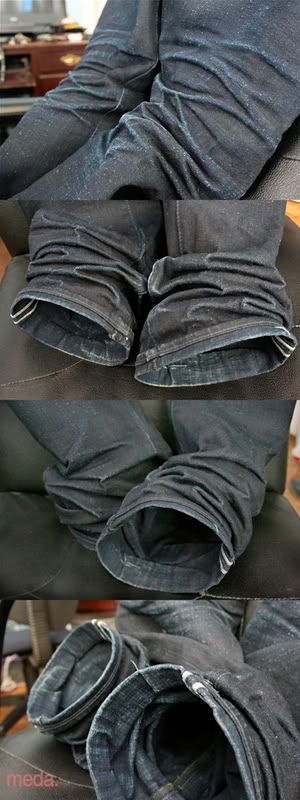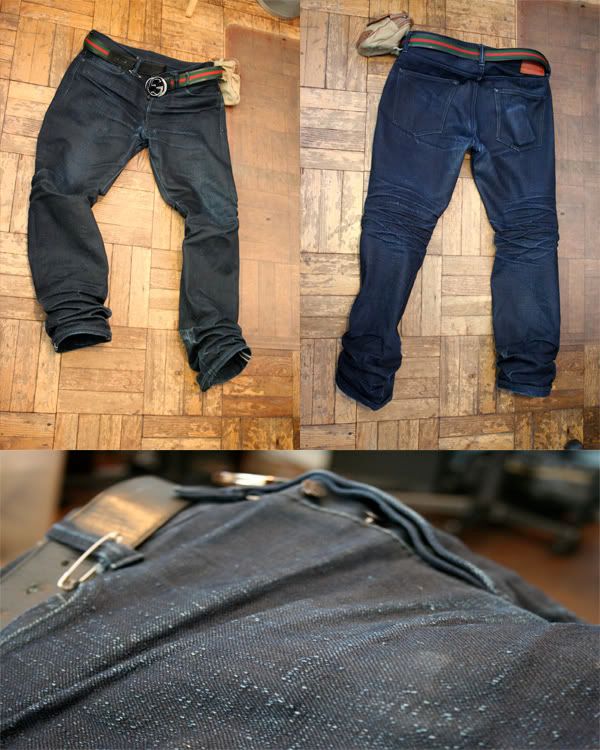-
Posts
1729 -
Joined
-
Last visited
-
Days Won
2
Content Type
Profiles
Forums
Events
Gallery
Store
supertorial
Classifieds
Posts posted by rockon99
-
-
not sure - make sure you keep the leather hydrated. did you hot dry them?? that seems to always kill the patch. but they are jeans - and jeans need a'washin..
0 -
^^ reproooooooo........
0 -
the excitement is building
lets put on Bolero or something.
or bang our heads to death metal.
0 -
jeans they wanted to beat the fuck out of in 6 months
im at 6 months of beating the fuck out of my jeans. but i plan on beating the fuck out of them for another 6 months at least. if they last longer, i'll keep beating the fuck out of them
0 -
i sat in gum somewhere in budapest in 100 degree weather in my samurai blacks. they're fucking disgusting now. been wearing them everyday for a while.
damn - ruined? how do you get that shit out?
0 -
Well - it IS overall good quality.
I dont think he will buy it, but i always tell my friends that dont understand this whole denim thing "why buy something, especially something that lasts as long as teh jinz do, that doesnt have character??" when i got my first pair of sams i was like, wow, these have CHARACTER. haha
i dont think your dad will care about that argument though.
0 -
yeah, we love it so much when people do that. I point the heater at the dressing room and put on venetian snares, so you get the full experience
alright - i know what to expect now
 thanks hahaha i'll try to enjoy myself0
thanks hahaha i'll try to enjoy myself0 -
shiiit i gotta jump on those 610s. i was lookin for a change w/ maybe a pair of PBJs but damn the tex cotton in a modern fit seems pretty juicy
0 -



crosspost from cheapmonday thread, 7 months, first wash at 5 months
some o the best cheap mondays i've seen around hurr.. nice jobb
0 -
[And relax, buddy. Think negative repping me is gonna knock me down?
 ]
]ohhh schnaapp..
0 -
Have a read: http://en.wikipedia.org/wiki/Swastika
Buddhism
The symbol as it is used in Buddhist art and scripture is known in Japanese as a manji (literally' date=' "the character for eternality" 萬字), and represents Dharma, universal harmony, and the balance of opposites. When facing left, it is the omote (front) manji, representing love and mercy. Facing right, it represents strength and intelligence, and is called the ura (rear) manji. Balanced manji are often found at the beginning and end of Buddhist scriptures (outside India).
Buddhism originated in the Indian subcontinent in the 5th century BC and inherited the manji. These two symbols are included, at least since the Liao Dynasty, as part of the Chinese language, the symbolic sign for the character 萬 or 万 (wà n in Chinese, man in Korean/Japanese, vạn in Vietnamese) meaning "all" or "eternality" (lit. myriad) and as 卐, which is seldom used. A manji marks the beginning of many Buddhist scriptures. The manji (in either orientation) appears on the chest of some statues of Gautama Buddha and is often incised on the soles of the feet of the Buddha in statuary. Because of the association of the right-facing swastika with Nazism, Buddhist manji (outside India only) after the mid-20th century are almost universally left-facing: 卍. This form of the manji is often found on Chinese food packaging to signify that the product is vegetarianand can be consumed by strict Buddhists. It is often sewn into the collars of Chinese children's clothing to protect them from evil spirits.
better yet compare the English one and the Japanese one.It`s called "manji" in Japanese. http://ja.wikipedia.org/wiki/%E5%8D%8D
Thank you for clarifying
 i've def seen it on packages of food. i wasnt sure what the significance of left/right facing though.
i've def seen it on packages of food. i wasnt sure what the significance of left/right facing though.thanksss
0 -
pardon me if i spend all day in your store trying on everything............
0 -
A.P.C.
in superdenim
yo n00bzthis may be a total late pass (i never read this subforum)
yup 10char
0 -
^^ didnt know that - -
 0
0 -
what's a good brand v-neck? i want the v sorta high and the shirt somewhat thick, not thin like an undershirt
Banana Republic has a line of basics that arent super thin. im addicted
their v-neck is not super low either. checkumout..
0 -
^^^^^^^^^^^^^^^^^^
x-post from evo thread

See all those irregularities in the denim fabric its self?
pbj 007s
0 -
Anyone find some good white nubuck derbies - summers here.
thanks.......................................
0 -
This shit gonna get locked up? hahahaha
0 -
not sure if i feel you. after a soak, they will not stretch out longer than 36.5 inseam.i think he means waist?
you might have as well, but just mistyped
I did mean waist considering that the inseam is listed to measure 37 inches pre-wash/soak.
what if i stick something in the waist like a hanger to prevent it from shrinking on the first soak. mm
0 -
E46 you drive a bmw? off topic //
0 -
still waiting for the "flurry of neg reps"?
0 -
 those apc's look good. Very different fades for the same jean
those apc's look good. Very different fades for the same jeanDid you size differently for the two Meta?
0 -
PBJ 007 - if i buy a 34 in Raw, they measure 36.5, they will shrink to 34inches.
- how much more than 36.5 will they stretch?
i want the legs to be as slim as possible for this cut. feel me?
0 -
A.P.C.
in superdenim
^^^ good jobbb
did this thread get boring again?
0




A.P.C.
in superdenim
Posted
If all of the apc dry denim is the same denim.. which i assume it is, it is all sanforized. which means it wont shrink on the first wash...much.
maybe the guy meant after they stretch out, which they will.